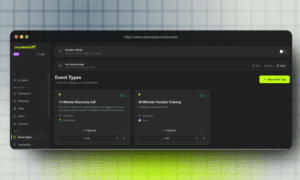A swarm of shoebox-sized Dove satellites orbiting 250 miles above the Earth are assisting in the transformation of the global understanding of economic life on the ground. Myanmar’s night lights show a slower rate of growth than the World Bank predicts. Photos of homes with metal roofs in Kenya can demonstrate a journey out of poverty. Trucks parked in factory parking lots in China might be a good indicator of industrial activity.
Images satellites, combined with big-data tools, are assisting in the creation of a macrocosm of objects too enormous for the human sight to comprehend. The information can be used by aid organizations to distribute funds. They can be used by investors to make stock selections. According to Reports and Data, the satellite camera market is registering a robust growth rate, and this trend is expected to continue over the years.
Satellite cameras and the images they provide are one of those once-in-a-lifetime game changers that have the potential to completely transform the stock- and economic-research industries. In most nations, monetary policies are still determined by polls of a few thousand families and businesses. But instead if these are based on satellite images and the data provided by high resolution satellite cameras, there is a far better chance that monitory policies will be more prudent than they are now.
Satellites have generally remained the exclusive domain of the richest governments and enterprises for much of the nearly six decades since Sputnik first circled the Earth, as they costed billions of dollars and weighing tons. But cheap circling cameras are becoming increasingly common these days. One of the largest-ever constellations belongs to Planet Labs Inc., a San Francisco firm formed by former NASA engineers. Every 90 minutes, more than 50 of its Doves orbit the Earth, taking high-resolution images of the whole world.
BlackSky Global, based in Seattle and supported by Microsoft co-founder Paul Allen’s Vulcan Capital, expects to launch its fleet of 60 satellites next year, scanning the entire globe 40 to 70 times per day.
Request a Free Sample for Satellite Cameras Market Report
Satellite cameras are getting smarter, their resolutions are becoming amazing and a huge amount of data is being generated by millions of photos. But millions of photographs are useless unless they become data. To achieve radical economic transparency, imagery will eventually track all of the world’s vehicles, ships, mines, and warehouses.
For example, an index of Chinese factory production was constructed employing algorithms to monitor over 6,000 industrial sites, with the goal of replacing survey-based purchasing-manager indexes with software that can identify signs of economic activity, like transport vehicles in parking lots. In May 2021, the China Satellite Manufacturing Index slipped to 46.9, well below the government’s China Manufacturing PMI of 50.2 whereas expansion is indicated by readings of above 50.
Hedge funds, banks, government agencies, nonprofit groups, and Fortune 500 businesses are among ones that stand to gain from data generated by satellite imagery. Innovations like satellite cameras are giving economics a new lease on life, where policy is guided by information-gathering techniques that date back to the 1940s. Images may now be translated into statistics in days rather than months, and even old data can yield new insights.
Economists have been able to assess the brightness of cities at night using declassified US Air Force weather-satellite imagery dating back to the 1970s. They are re-examining estimates for global inequality and growth in poor nations as a result of this proxy for economic activity. For instance, Myanmar, one of the world’s smallest and poorest countries after a half-century under military rule, has had an average annual growth rate of 10% for more than a decade, according to World Bank data. Brown University economists found that the luminance implied an average of 3.26 percent based on lights blazing across the Southeast Asian nation.
A Columbia University professor in New York, used the same night-light statistics to cast doubt on World Bank estimates that 30% of the world’s population lives in poverty. According to him, satellite photographs indicate that the percentage is only 6%.
Satellite photos have assisted in demonstrating that poverty is lower and declining at a faster rate than surveys suggest. According to Luminosity data, impoverished countries’ growth has been higher, developing-country living standards have increased quicker, and global income distribution has grown more equitable.
While satellite data holds “a lot of potential,” the results drawn from satellite photos have yet to be verified. Because lights are more closely associated with industry, they are less reliable for determining activity in rural and agricultural areas. It can assist fill in the gaps, but it is not a replacement for direct data collecting from families. Researchers at the World Bank are exploring new techniques to combine satellite data with statistics from census surveys to better estimate income and consumption.
GiveDirectly, a New York-based nonprofit that delivers payments to Kenya’s and Uganda’s poorest people, uses satellite pictures to assist select who receives donations. Families with thatched roofs are more likely to receive assistance than those who live in more solid homes.
Despite recent advancements, satellite pictures may never be able to offer data for important economic indicators like inflation or employment, let alone more abstract measures like consumer confidence or lending rates. Even if you could count every car in every Wal-Mart parking lot in North America many times a day, you wouldn’t be able to tell how much anyone spent. Conclusions are based on how visible visual data relates to actual income and consumption levels.
Request for Customization- https://www.reportsanddata.com/request-customization-form/3620
However, Wall Street is becoming more interested in satellite imagery and its potential. Rich Abbe, co-founder of Iroquois Capital Management LLC in New York, was fascinated enough by Remote Sensing Metrics LLC’s analysis that he took a stock in the Chicago-based firm and began utilizing its techniques to inform his trading. He likes that the data is objective and that not everyone has access to it. He recently used the Remote Sensing Metric’s parking-lot totals reports to buy shares in Chipotle Mexican Grill Inc. and J.C. Penney Co., both of which are consumer companies. And now that he has a macro view, he sees additional opportunities in various industries, from mining and commodities to oilfields and rigs.































